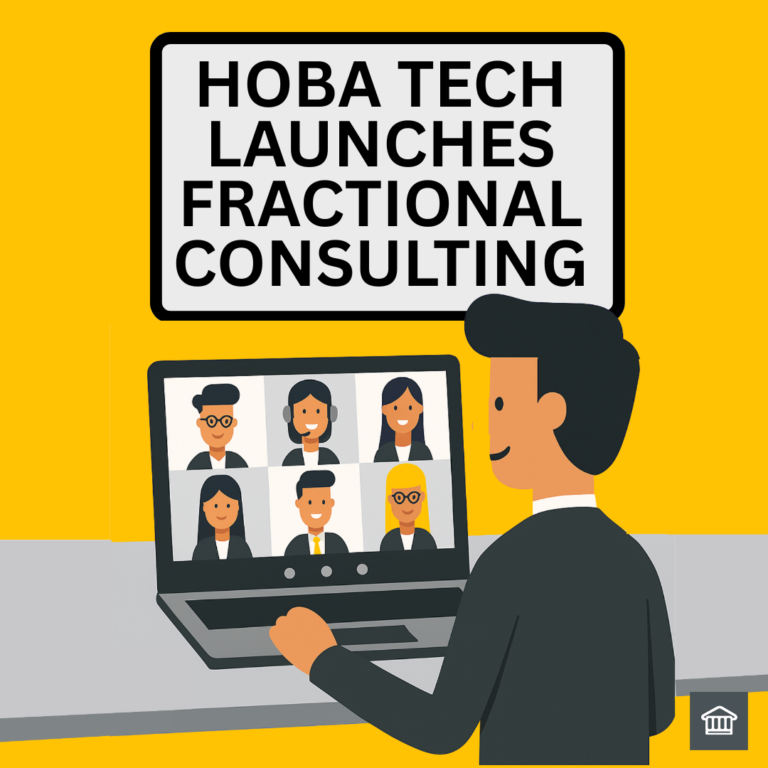Finding it hard to survive the COVID-19 storm? The current crisis is forcing businesses all around the world to take swift action in order to respond to the pandemic and its consequences on their businesses. Countless businesses are now working on revamping their current business strategy. So, what do you think is the common ability these businesses are exhibiting in order to get out of this crisis? The answer is Agility.
In this post we are going to talk about – What Agile is, how it is changing the corporate landscape, and the 5 areas you can implement now to adopt the Agile Mindset in help get through the COVID-19 storm.
What is Agile?
Agile is known to be one of the most popular and important work ideologies that companies have used to achieve success in their operations. These a lot of mis or disinformation around agile and the ‘agile concept’.
Agile or ‘being agile’ basically refers to how capable an organisation is in adapting to the turbulent environments and how quickly it can respond to the unexpected changes. It follows the ‘growth mindset’, to be precise.
Agile or ‘being agile’ basically refers to how capable an organisation is in adapting to the turbulent environments and how quickly it can respond to the unexpected changes.
Heath Gascoigne Tweet
The growth mindset refers to the capacity of an organization to cultivate new abilities and direct their efforts towards achieving growth. This helps them adapt to the changing environment better, allowing them to perform better during unpredictable times.
The growth mindset refers to the capacity of an organization to cultivate new abilities and direct their efforts towards achieving growth.
Heath Gascoigne Tweet
The agile approach is not just limited to the IT department anymore. Companies that are customer-centric and have innovation at their core have now started implementing the same approach to all their other organisational functions – boosting efficiency, productivity, speed and outcomes. In fact, some of the most popular companies we know today – including Microsoft, AT&T, IBM and Cisco – continue to use the very same tactic to lead the market.
Do you know why Agile (that started off in the software development subdivision) has now rapidly spread across all the other sectors? The reason is simple – only businesses that are agile in their practices can survive the constantly changing business environment. Recognition and discoveries by Harvard Business Review and Learning Consortium Project prove the same. And looking at the current COVID-19 crisis, the statement still stands true.
What are the Principles and Benefits of Agile?
In Agile project management, there are 12 main principles to guide teams on how to execute the agile methodology. These are summarised below:
- Prioritise consumer satisfaction
- Harness Change
- Focus on Quick Delivery
- Work in Collaboration With All Sectors (Development, Productivity, etc.)
- Support Self-Directed and Self-Motivated Teams
- Conducting Face to Face Interactions (over any others)
- Deliver usable product as a measure of success
- Maintain a pace of development that is sustainable
- Pay continued attention to quality (not quantity)
- Keep it simple (only do what is essential)
- Create self-organising Teams
- Reflect regularly to boost team effectiveness
Although the agile approach benefits businesses at all times, in times like these, agile shows its true value. First off, it offers businesses a rhythm to follow in these uncertain times. When things are not going as planned, the agile approach allows you to follow regular patterns for business growth like daily reviews and meetings – it creates momentum while keeping management and work balanced and positive.
Secondly, it allows organisations to make swift changes when needed. When the outcome is not quite like what you imagined, businesses can quickly alter their approach to achieve their desired outcome – since the final product is what matters here the most.
Agile encourages you to ‘deconstruct’ your work by dividing it into smaller units – allowing you accomplish it step by step or ‘iterations’. This approach allows room for corrections. Last but not the least, agile empowers teams to make bold decisions without waiting for permissions, which significantly reduces the ‘waiting-time’ and ultimately boosts the productivity of organisations. Their ability to make quick calls ensures optimal responsiveness and speed. With the current situation, this is actually the need of the hour!
You may argue how one of the core principles – face-to-face interactions – can stay relevant during a crisis like this one? Well, face-to-face interactions can be done through numerous means like audio/video calls. Did you know that the Scrum Alliance, which is an organisation of more than 1.2 million people, uses the agile approach to mass-produce and keeps their teams on audio and visual communication while working? If your commitment is strong, visual communication works just as fine!
Why Agile is Better than Any Other Approach
When compared to all the otherpopular management approaches, such as Waterfall, Kanban and Scrum, Agile seems to trump all the other forces. The reason behind this being agile is relevant to the current ‘digital transformation’ era.
Waterfall follows a ‘linear’ mindset, and does not lend well to going back into the processes to make changes. While Kanban is just focused on how to improve the process – it doesn’t really take into consideration the final product. No matter how excellent the current process may be, if the final product is not up to the mark or good enough – the entire effort could go to waste.
Scrum, is actually a version of Agile, which uses cross-functional teams to organise work into small manageable pieces of work that can be completed within a prescribed time period (called sprints, usually 2-4 weeks long), and focuses on two areas – quality, and speed – getting working deliverables (products and services) out to the Business (customer), to be ‘road tested’ to get feedback faster, to iterate the product, and continuously improve it.Now, you might be able to see why agile proves to be the best – especially during the current crisis.
Agile promotes adaptivity and synchronized operations. It breaks down projects into smaller steps – allowing you to correct yourself immediately when the need arises. This ensures no one’s efforts go to waste, nor is the production or speed compromised, while open communication keeps things transparent.
Agile promotes adaptivity and synchronized operations. It breaks down projects into smaller steps – allowing you to correct yourself immediately when the need arises.
Heath Gascoigne Tweet
The HOBA Principles
Digital transformation is not a one-day task – which is why more than 70% of business transformations seem to fail. It takes expertise, innovation and conviction to achieve your goals.
The HOBA framework combines Business Architecture, Kanban and Agile Scrum to help businesses achieve a successful agile transformation. This business transformation framework follows a proven 6-step process and a result-driven approach to help you transform your business to the core.
The HOBA framework promotes implementation through the following steps; focus, control, analyse, evaluate, design and implement. Numerous businesses in the government and private sector have been able to rescue their failing business by employing this innovative framework.
In these uncertain times, you need to adopt the agile approach to survive the storm. And the HOBA framework can precisely help you avoid the pitfalls that might lead you to your business’s demise. Learn more about the HOBA framework here.
How to Make Agile Work in Your Organisation
Wondering how you can adopt the agile approach to see some positive results during the current crisis? Start by going digital and putting an effective digital strategy into place (if you haven’t already). This is crucial and the most basic step that will help you stay relevant in times like these.
Then set some goals and deadlines in place. Set up fixed times for each of your tasks to make sure you do not spend excess time dwelling on one small step. This helps streamline your tasks and increases productivity. High priority tasks will always get done on time – incurring minimal losses to the business.
Secondly, continue checking for quality and adapting accordingly. Work in collaboration with a partner who will continuously monitor your work/progress and inform you of the errors as you make them. This will allow you to immediately correct your mistakes and avoid any inconveniences later on. This step is crucial, as it will ensure that the customer’s demands are being met even if the conditions are unstable or unpredictable.
While you’re at it, make sure you’re following the ‘growth mindset’ and look for opportunities to improvise. Instead of checking the outcome and immediately moving onto the next task, teams should stop for a while and reflect on the situation at hand. Is there a way they can improve the outcome? What can be done to achieve better results? This helps businesses stay one step ahead of the others – especially during uncertain times like these.
Last but not the least; don’t be afraid to take bold decisions. If you are the CEO, let your teams feel in control and their contribution is valued. Ask them to share their ideas – most of the time, it is your people that know your business the best, they often have the best ideas to solving your company’s problems.
These steps will help you speed up your crisis-transformation – allowing you to become an unstoppable force!
Areas to Focus on in this Crisis to Make Agile Work for You
Some of the most important pillars of the agile methodology revolve around organisation and prioritisation of the tasks as part of adapting to the changing environment. In order to adopt the agile approach and thrive in a crisis like this, these are the five (5) areas you can implement now to adopt the agile mindset:
1. Plan the Work
Planning all the tasks and dividing them into smaller achievable steps helps create a direction for the teams to follow. This is especially crucial for teams working remotely. Arrange regular zoom meetings and communicate the plan to the team members.
2. Prioritise the Order
Assign the tasks in the order of their priority. Make sure there is constant communication throughout your organisation across all levels. Also, build a common vision and express it to your teams so they can work towards the same goals. Remember – planning is important but prioritizing is key here!
3. Timebox the Work
Make sure you have assigned a hard and fast deadline for each task – this way the team members (who usually tend to procrastinate while working remotely) will work dedicatedly to complete the tasks on time. This also diminishes the chances of delays or disruptions in the production process and high-priority tasks get done on time.
4. Inspect and Adapt
Set some ways to measure the progress and learn as you go. Make sure to constantly inspect the quality of the work and adapt accordingly. Conduct regular audio and visual meetings to evaluate the progress. Set up 60 minute calls each week and discuss your progress, communicate any issues, and forecast plans for the upcoming meetings. Also, add a 30 minute call each day for a quick review of all things. This step ensures transparency and helps keep everyone committed.If you are working on your own, partner with a team member who can monitor your progress and provide constructive feedback.
Keep evolving no matter how perfect your outcome may be. If your product is performing great right now, the demand will surely fluctuate once COVID-19 is over and the consumer buying behavior changes. Have you made any plans to improvise yet? Do lots of forecasting and planning. Got loopholes? Find ways to adapt and improve.
5. Pause and Learn
You must build into the plan time to pause and reflect. Instead of just rushing onto the next product/service to change, improve and sell, evaluate the previous one and see where you can improve – not only the outcome, but the process you used to get there. Constant learning and adjusting is a crucial part of the agile approach – which is especially needed during times like these when everything is just too unpredictable.
Use virtual tools like Zoom and Webex. You can use virtual whiteboards as well to explain different concepts to your employees and customers to get their feedback and input. All in all, you need to focus on your digital strategy and how you can make the most of it.
Though this transition to the new Work From Home Model won’t be easy, by remaining consistent and committed, you will be able to turn things around in your favor soon enough.
Hope you found some value in this, thank you for reading this. Let me know what you think, or what you would like to see next in the comments below!
Sincerely,

Heath Gascoigne
P.S. If you want to join our Business Transformator community of like-minded Business Transformators, join the community on the Business Transformator Facebook Group here.
P.P.S. If you want to learn more about business transformation, check out The Business Transformation Playbook here.
For more information, visit https://www.hoba.tech












